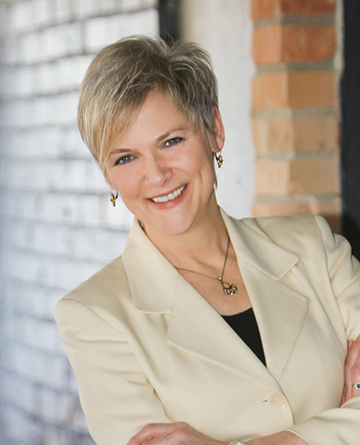“Invent the Future” – Restart Inventing the Future, as the ancestors of the Renaissance did to recreate civilization.
As described in our previous articles on this topic, the Renaissance that followed the Dark Ages provides a vision, model and plan to create a much needed New Renaissance in Business.
Renaissance Humanist Roadmap
One of the first actions taken was by the Renaissance Humanist who
- Education. Created a new form of education and types of schools. Returned to the humanities on which western civilization was built. Today- Business can and are partnering with independent K-12 schools with a classical (Humanities) curriculum to develop, nurture and engage future employees. Educators and businesses have developed partnering programs to enhance employee education and learning, for example Cornell On-Line Certification and Degree Program, Oregon State Multiple Engineering Internship Programs (MECOP) and Greater Spokane Chamber of Commerce Greater Learning Programs.
- Work Force Development- Revitalized the understanding of human dignity, the power to shape our own lives, and the knowledge that human beings can create great works and innovation. Today- Business education, training, mentoring and advancement programs nurture employee development and enabled and encouraged them to create and innovate. These programs provided opportunities for advancement forward or growth within a discipline or role.
Cost Benefit
What is the Return on Investment (ROI) of implementing these programs?
Cost of Employee Turn Over- As Career Builder describes
“The average cost per employee when turnover occurs is around six to nine months of an employee’s salary, though in some cases it can cost up to twice the amount of the employee’s annual wages.”
Cost of Open Position- Turnover costs are widely reported. The Cost of Open Positions is new information, and while alarming also motivating.
Fiverr Pro partnered with the economists at Lightcast to understand the impacts of unfilled positions on both the total domestic economy as well as productivity across various industries. They found
“The U.S. economy is suffering due to unfilled positions. The cost to the economy is a staggering $1.08 trillion per month.” “Individual businesses are also paying the price. Just one open role across key occupation groups (in their study) costs a business, on average, nearly $25,000 a month in output.”
Open positions in highly skilled professions are costing businesses even more.
Within specific industries the cost of open positions is even higher. With these statistics in mind Businesses are compelled to change approach to education and workforce development. It is simple math. For example, a company of 20 employees in medical device component market sector has an average turn over of 30% in the last 5 years. Four positions were open, on an average, over that time period. The cost to this company is $225,000 per year in lost productivity and hiring costs.
Work Force Education and Development Programs
What do these programs look like?
Over 30 years ago, business took a role to educate employees after high school or formal academic degrees. Examples included IBM, Westinghouse, Ford Motor Company, Precision Castparts, and many others. Most if not all of these programs were dropped or eliminated in the early 1990s. Why?
Not that I support the Military Industrial Complex (I do not), but a number of the aerospace and defense companies are back in the game after a long hiatus. Northrop University, “formerly Northrop Institute of Technology and Northrop Aeronautical Institute, was a private for-profit college in Inglewood, California, focused on aviation, engineering, science, mathematics, and computing. It was established in the 1940s as one of the earliest examples of a corporate university. It operated from 1946 to 1991. Toward the end of 1940, Northrop Aircraft Corporation started a training program for airplane mechanics who would, then, work in its manufacturing facility in Hawthorne, California. In 1942, Northrop Aircraft started a program called Department 95 that provided technical training exclusively for military personnel during World War II. After the war, John Northrop formed the Northrop Aeronautical Institute because he recognized the shortage of master mechanics, airline maintenance specialists, and aeronautical engineers for civilian aviation.[ Classes started through home study in January 1946 and expanded to on-site in June 1946. READ MORE
Today, Northrop Grumman has developed a purposeful plethora of workforce development programs for early education, internships, growth and mentorship, career advancement, and more. Lockheed Martin has formed partnerships with Cornell and the University of Colorado for employee further education and degrees and career development. General Dynamics has similar internships, mentorships, and the ability to achieve master’s degree through their organization. On a smaller scale and more regional level, Schweitzer Engineering Laboratories (SEL) Laboratories has developed enhanced learning programs, in house.
The new owners of Fabtech Precision Sheet Metal have implemented a number of programs, over the past two years, to hire and retain employees and improve company culture. FabTech (30 employees) has partnered with the AJAC Advanced Manufacturing Apprenticeship Program to train and provide internships for high school students who have opportunities to become their full-time employees after graduation. The company has improved salaries, benefits, career advancement opportunities and by doing so, dramatically improved the organization culture.
Step by Step- Program Development
As Career Builder describes – “Employee turnover occurs for many reasons, such as employees feeling underappreciated or insignificant at work. When employees don’t feel valued, they’re more likely to look elsewhere for employment. Another key reason for turnover is a lack of engagement in the workplace, often related to a poor company culture. This can cause people to feel uninterested in a company and even uncomfortable if the company culture is overtly negative. If an organization lacks a clear mission and goals, this can also cause employee turnover when staff members don’t feel confident in the future of the business…. Many employees leave their current jobs when they don’t feel a concrete possibility of advancing their careers.”
From this description it is clear that employees are not just looking for “work life balance” and more money. They want to be doing valuable work and be appreciated. They want to be engaged in the company product or service in a meaningful way. They want a positive culture with clear mission, vision, and goals, in a growing expanding product or service. They want to grow and expand with that company. They are seeking human dignity, knowledge and growth.
Sound like a call from the Renaissance?
“The Renaissance Humanists revitalized the knowledge and understanding of human dignity, the power to shape our own lives, and the knowledge that human beings can create great works and innovation. They revived knowledge, arts, and moral philosophy of their predecessors. “ David Fideler
Developing work force education and development programs starts with assessing culture and being open to looking at issues and opportunities for improvement in a new way.
The business “needs to develop and implement their Learning and Development (Education and Work Force Development) initiatives and programs in alignment with company strategy and objectives. The executive team “needs to understand how these initiatives and programs can positively impact the behavior and culture of the organization, and ultimately the impact on the bottom line.” Diane Gibson, DMG Consultancy, (The Mervyn Group Partner).
Diane Gibson offers a step-by-step plan for development and implementation. Diane starts with asking “what if”, considering possibilities which can become reality, and ‘Just do it!’, not waiting until it is perfect.
“The purpose of developing a company university or a customized Learning and Development Program (L&D) is to help employees improve their skills, knowledge, and behavior – ultimately improving earning capacity and positively improving their life. Also, it empowers and retains employees, future-proofing the company, and boosting business growth and performance. For this to be successful, it must become an integral part of the corporate culture…Don’t underestimate the power of education. It emphasizes the link between everyday activities and achievement of the organization’s strategic objectives, and the individual employee…Communicate and foster an environment of learning and involvement. “
Creating Company University (or L&D Program) includes the following:
- Commitment and a Plan- Developing an internal company university (or L&D Program) succeeds with a solid commitment, a well-thought-out plan, and alignment with the business strategy and goals and an assessment of benefits and ROI. The plan includes clarity about what you are trying to achieve and smart goals.
- Company Brand- Create a brand, logo, and tag line for your program, remembering your company and learning is unique.
- Learning Providers or Resources- If needed, identify the best providers to assist with developing curriculum, metrics, learning methods.
- Educational Institutions Partners- Identify universities, community colleges, trade schools, and professional organizations as partners.
- Implementation and Improve- Establish metrics and evaluate how the program impacts the behavior and culture of the organization, and ultimately the bottom line.
Diane Gibson has the right combination of executive leadership and education, strong business acumen, and experience as a team leader and coach. She has developed customized (not canned) learning and workforce development programs that focus on your company’s needs and the needs of employees. Diane Gibson has helped many clients develop their own internal “Company University”. “Keep it simple and enjoy the process, as you see individuals and the organization grow.”
How can we help?
The Mervyn Group partners are passionate about helping businesses thrive under what have become harrowing conditions. We are ready to assist in reviving and optimizing your business, and/ or potentially creating your own Renaissance business. READ MORE
We will help you create a plan to achieve your vision without compromising your values. We will help you evaluate and partner with you to quickly implement solutions and sustainable improvements to achieve your vision, mission, goals and objectives.
To Learn More Contact
Debra Mervyn- Debra@MervynGroup.com
Diane Gibson- Diane@DMGConsultancy.com










